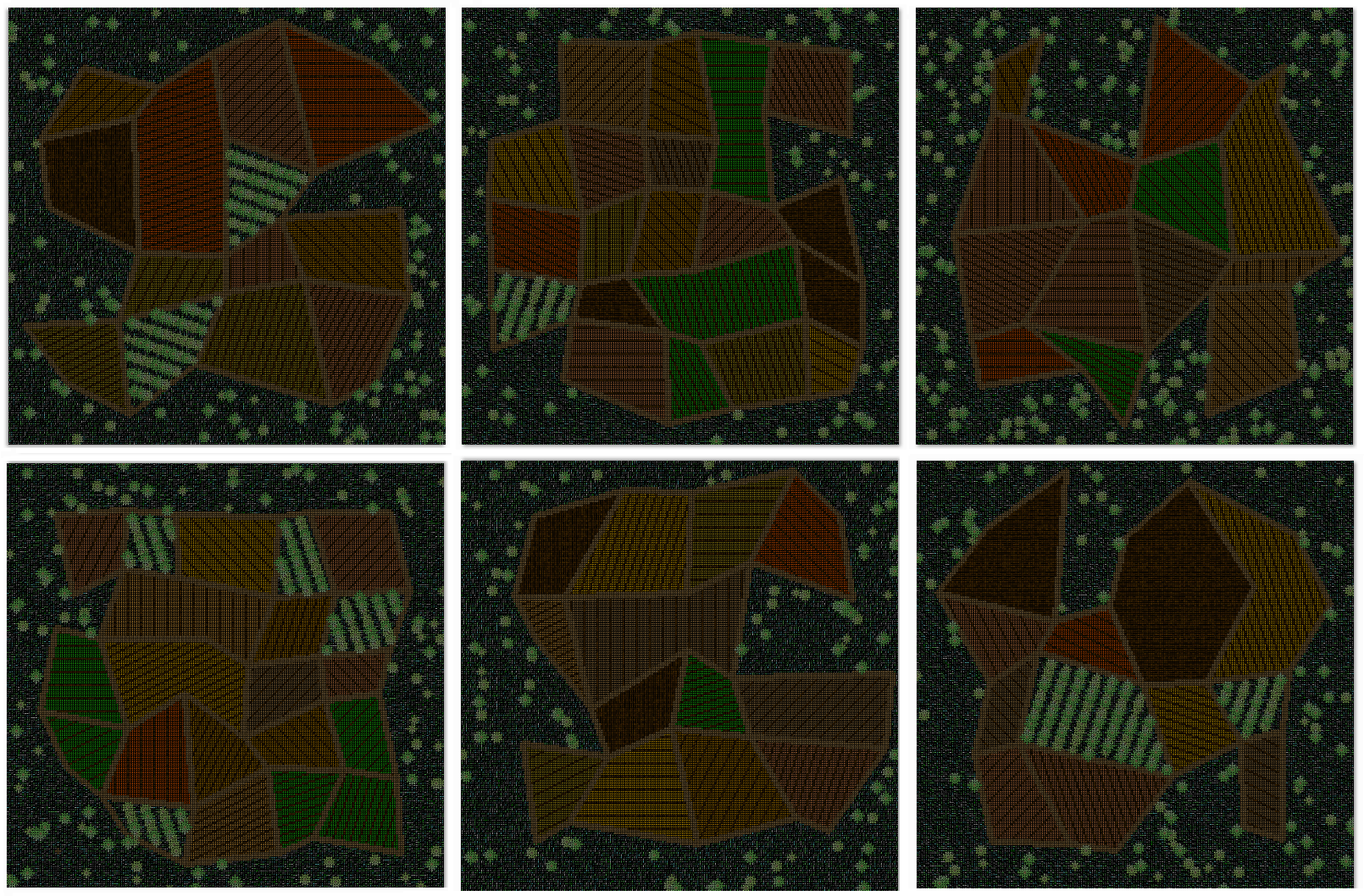As I’m away from tomorrow until the next weekend, this week’s update is a little shorter, and a little bit early for once. First off, thank you all for the awesome response to 0.5 – copies have been flying off the virtual shelves and I’ve got a lot of really supportive feedback, and some important bits of constructive criticism too. Since I don’t know the meaning of “resting on your laurels”, I have already started work on 0.6 and made big strides in generating many of the game’s settlements. I decided to start off with farms, and have created a system for generating farms of various sizes, with various crops and various interior dimensions. Farms are obviously far from finished – I still need to get buildings generating, as well as making the trees in the orchards (currently just generic trees) – but it’s a solid start. I’m leaving the generating of buildings part until I have all the different types of settlement ready for building generation so that I can code it all in one fell-swoop; I expect taking account of all the required factors will end up being quite complex, so I’d like to do it all within a couple of coding days back-to-back.
I’ve also begun to implement some of the basic parts of town generation. It starts off by creating a network of roads appropriate to the type of road going through the town (if any – special cases for isolated towns have not yet been handled) and then spreading buildings along them. There will be a variety of rare and crucial buildings in towns – more on this in some later entry – and then a large amount of general housing and the like. For now, just for the sake of testing the system, the buildings are generating… as lava… but I’m sure you get the idea in the bottom image for how towns will end up looking. The town code as it stands now only took a little over a day and I’m amazed at how interesting these layouts are already looking. Once I start to add buildings to towns I’ll put up another update on that. I’ve started to work on generating architectural styles as well, and varying the materials that civilizations like to construct buildings from, but the next step for towns is basically the creation of a massive building database.
From this point onwards (once I’ve done the few additions to farms I need to do) I’ll be working on the non-building parts of other settlements. I’ve got some very interesting ideas for how hunter-gatherer settlements will generate, but I think I may work on graveyards next, or possibly nomadic fortresses. We’ll see. Either way, I have a train so catch to that’s everything for this week. Let me know what you think of these very early stages, and see you all in eight days. Until then you can keep up to date on my devblog, Facebook page, or Twitter feed. The devblog is updated weekly on Saturdays (or sometimes Sundays), Facebook a few times a week, and the Twitter roughly daily. Any thoughts, please leave them in the comments! Stay tuned...



That looks crazy!
I was wondering, would it be possible to use the farm generation for city districts to make them less blocky? Not telling you to, just genuinely curious if that would work.
Excellent! Then I have done my work. Re: districts, no, but they will not be as blocky as they seem on the map when you explore them on the human scale; they'll have curved borders and such, but will still essentially be a grid, albeit one with wobbly edges. The thing is that this is within a single world map grid on the human scale, whereas each map grid on the world map is a city district, and I can't really blend those at that resolution :(
The things you do with text...
*bows*
Hey, you're at the top of the front page ATM! Well, latest articles.
The towns and fields are looking good.
I noticed! Maybe I should submit at a weird time on a Friday more often. And thanks!
This has been driving me insane for a while now: Most hunter-gatherer societies WERE nomadic or maybe semi-nomadic (seasonally nomadic). Few places in the world had the resource density to support sedentary hunter-gathering groups.
This is very true (my chief creative consultant for the game is an academic archaeologist) but I have chosen to differentiate for the sake of gameplay, not for the sake of absolute realism. Nomadic groups will have caravans and extensive trade routes, whilst hunter gatherer groups will have a central settlement whilst they hunt/fish/farm etc within their territory. Again, not 100% realistic, but gameplay variation > realism, in this case.